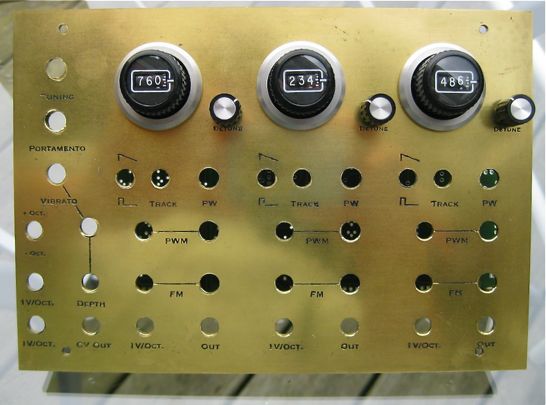
Saturday Synth Porn: Every Saturday, we try to bring you some droolworthy images of some sexy synth gear.
This image, via photon, is of an amazing DIY brass steampunk synthesizer build of Jürgen Haible ‘Living’ VCOs. More images here.
Details on Haible’s VCO below. About the Living VCO, Haible says:
My goal was to build a set of VCOs that have the untamed bass range power of early EMS and Moog VCOs, but which are tracking a keyboard voltage over 5 or more octaves nevertheless. I found that “untamed” Beating in the bass range and controlled beating in higher octaves is not possible with standard exponential 1V/Oct oscillators. A good part of that special sound of early Moog and EMS oscillators is not because of any “randomness”, “unstability”, “instability” or “noisyness”, as so often is said. A good deal of their behavior is because of that, but it is not the whole story. There are also some very deterministic factors in these old circuits which have been unpleasant side effects for the designers back then, but which are worth a closer analysis when we’re designing a musical VCO today. This is implemented in form of three “linear detune” potentiometers on the JH-5A VCOs.
Features
